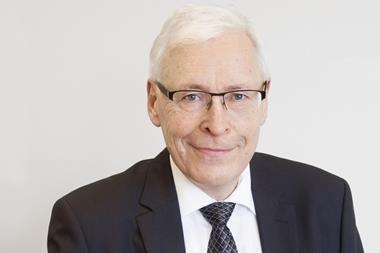GLOBAL - The classification of OECD and EEA government bonds as 'risk-free' in the current Solvency II framework, while equities and other asset classes are put in high-risk categories, is being debated amid the ongoing European debt crisis, according to Dexia Asset Management.
According to the latest Quantitative Impact Survey 5 (QIS 5), for every €100 invested in global equities, insurance companies need to set aside €39, and for every €100 invested in other equity, such as emerging markets and private equity, €49 need to be set aside.
Speaking at the recent 'Lessons from the past, Solutions for the future' seminar in Brussels, Kristof Woutters, head of financial engineering and pension solutions expert at Dexia Asset Management said: "The big discussion at the moment is that government bonds in the OECD and EEA area are considered to be totally risk-free, and so insurance companies invested in government bonds from whatever country in the European Union do not need to put aside capital for this asset class.
"These parameters need to be changed, but the time is not right."
Solvency II is part of the risk-based supervision in the new regulatory framework, which is moving away from the previous rule-based supervision.
The surplus capital protection required as a result of the risk-based solvency margin forms one of the challenges to portfolio managers today.
The others are, according to Woutters, increasing balance sheet volatility, the market consistent valuation of liabilities and the protection of poorly financially educated individuals caused by a shift from defined benefit to defined contribution pension plans.
Woutters advocates dynamic risk budgeting including downside risk control as the solution to surplus capital protection requirements.
And because of the use of market-consistent evaluations, there will be much more volatility on balance sheets, he said.
This means pension funds will need to lower their discount rates, which will, in turn, increase the liability value and lead to much lower funding levels and even underfunding.
A liability-matching strategy would help de-risk the balance sheet, while a performance-seeking strategy would maintain an adequate funding level, Woutters said.
A second generation of lifecycle strategies would help protect poorly financially educated individuals.
In addition, some concerns remain over the possibility of incorporating Solvency II requirements within the Institutions for Occupational Retirement Provision (IORP) directive.
The European Commission has asked the European Insurance and Occupational Pensions Authority to conduct an impact assessment on how funding requirements should be further harmonised.
Speaking at the IPE Pension Fund Awards Seminar in Brussels, Patrick Burke, chairman at the European Federation for Retirement Provision, argued that, if the same capital requirements under Solvency II were to be applied to the second IORP directive, a shift in equities and bonds would occur.
"There is a very bad and systemic risk to force segments of the financial market of that size together, to urge them to invest in the same way, as it leaves far fewer buyers of assets as a consequence."
According to Burke, it remains fundamentally incompatible to maintain consistency of cross-economic sectors within the IORP2 directive, as these two actors do not have the same requirements, with insurance contracts being based on fixed point pricing, while pension funds focus on various fixed point pricing.














No comments yet